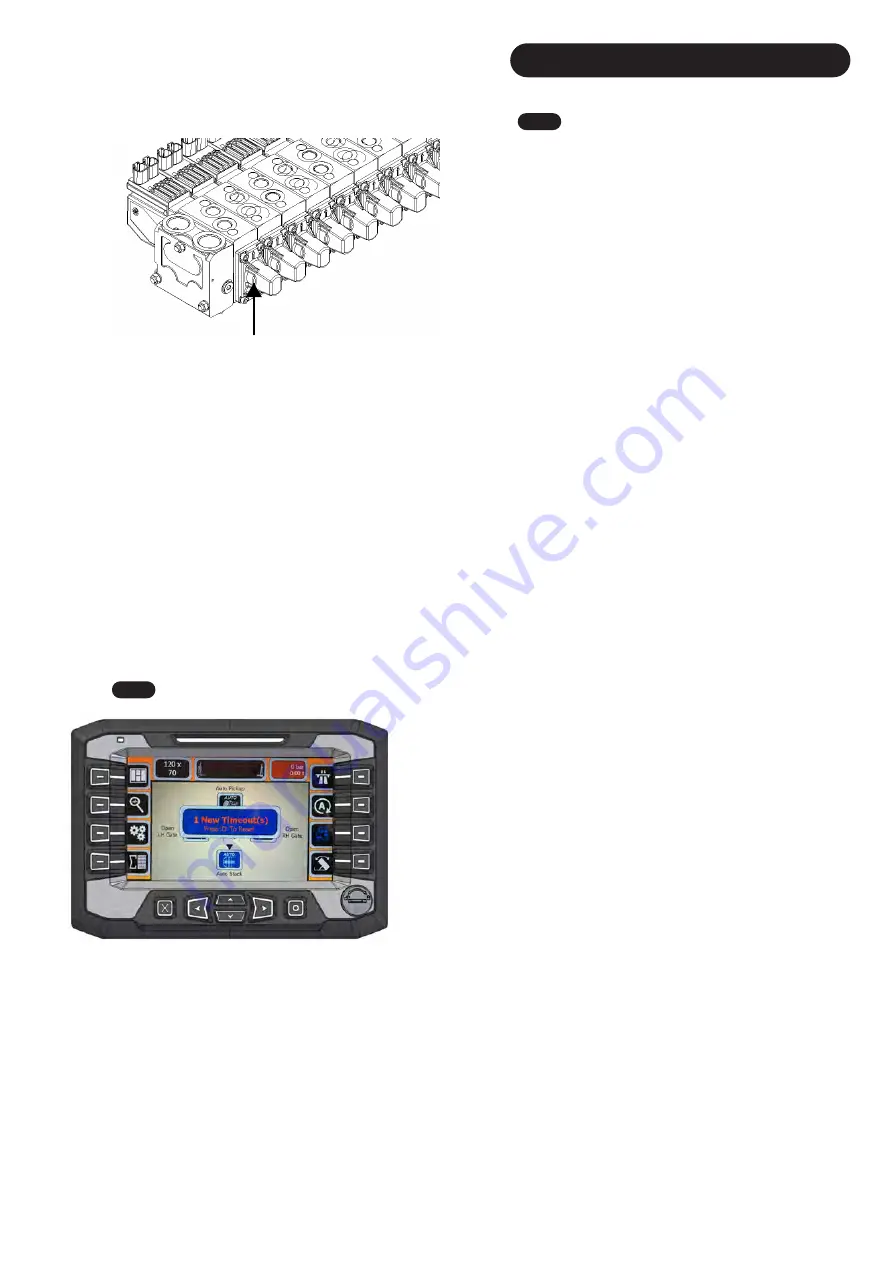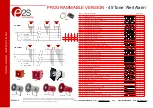
8
.0
Trouble
s
hooting
8
.
4
Initial Troubleshooting
This section should help you with working through common
faults which may occur on your Transtacker, requiring setting
or sensor adjustments.
When working on the machine, you must ensure
it is in
a
safe state to do so. The following list of procedures must be
abided by:
•
Machine must NOT be in automatic mode.
•
The machines PTO must be off unless stated.
•
Do NOT position yourself under an unpropped
component of the Transtacker.
When a sensor’s state needs to be checked, you can press the ‘Diagnostics’ button and scroll through the sensor pages to check the state all of
the sensors.
The first stage of troubleshooting is to identify whether the issue is hydraulic or electrical. To identify whether it’s hydraulic, the first option will be to
have the PTO running on Idle without any functions operating. Open the 'Diagnostics' Page from the start up screen. Cycle through the pages until
you come across the page ' Pressure Sensors', in here you will see a sensor 'PTO engage' - this should be at the standby pressure of the
Transtacker (should be around 20 BAR, if no functions are operating). If not then your problem may be hydraulic.
The second option is to take a 9mm spanner and manually operate the valve block. The location of the 9mm nut is located the bottom of each
slice (The Transtacker 4100 has 11 of these). The exact location can been seen in
F
ig. 1
4
3
. Only operate a slice if its safe to do so. Not all slices
will be able to operate due to some having selector valves in its hydraulic system which requires an electrical signal. However if you do choose
one of these slices, you should hear a change in pitch of the hydraulic pump due to it trying to pump hydraulic fluid around the system. The most
common slice to try is the Tine in the pickup. This is slice 11 (the most rightwards slice on the valve block). If this works you have proven that the
hydraulic system is working correctly. If not, its may be electrical.
The next step is to manually operate the individual function/s by using the joystick. If the function works correctly then you have isolated the fault to
be related to the control system, please go to
Section
Troubleshooting 8.0
for reference on the control system. If the system doesn’t operate
correctly then go to
Section Troubleshooting
8.0
.
Fig. 1
4
3
9mm Manual Operating Nut
8
.
5
Sensor Error log
The Transtacker 4100 has built in timeouts to all functions to help diagnose any
problems which
may
occur on the machine. For an example if a function only
takes 3 seconds to trigger its sensor, the timeout will be set to 4 seconds. This
will then stop the Transtacker from functioning any further because if a pipe has
burst it will restrict the loss of oil or potential damage to the machine. Once this
timeout has occurred, a pop-up window will be presented to let you know this
feature has happened (
Fig. 144)
.
To clear this, press 'O' on the screen.
This
timeout has been logged within the diagnostics pages. Navigate to
section 7.4
to see more detail about the timeout.
Fig. 1
4
4
38
Summary of Contents for Transtacker 4100
Page 61: ...58...
Page 62: ...59...
Page 63: ...11 0 Hydraulic Systems 11 4 Valve Block Schematic Fig 168 60...
Page 67: ...13 0 Maintenance 13 2 Pickup Grease Points Fig 172 64...
Page 68: ...13 0 Maintenance 13 3 Grab Arm Grease Points Fig 173 65...
Page 69: ...13 0 Maintenance 13 4 Turntable A Frame Grease Points Fig 174 66...
Page 70: ...13 0 Maintenance 13 5 Side Gate Grease Points Fig 175 67...
Page 71: ...13 0 Maintenance 13 6 Rear Clamps Grease Points Fig 176 68...
Page 72: ...13 0 Maintenance 13 7 Chassis Grease Points Fig 177 69...
Page 73: ...13 0 Maintenance 13 8 Platform Grease Points Fig 178 70...
Page 74: ...13 0 Maintenance 13 9 Axle Grease Points Fig 179 71...
Page 84: ...16 0 Operators Notes 81...
Page 85: ...82...
Page 86: ...83...
Page 87: ...84...
















































